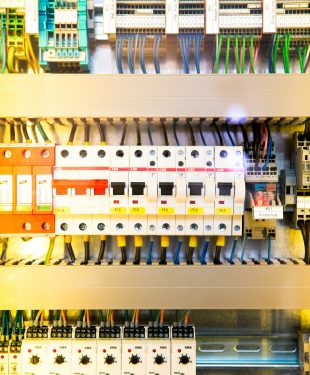Electrical infrastructure is the backbone of any modern building, whether it’s a home, office, or industrial facility. It encompasses all the electrical components and systems that power devices, machinery, and lighting, ensuring operations run smoothly. This article will focus on the essential steps in maintaining your electrical infrastructure. It will highlight the importance of regular maintenance and the impact inadequate upkeep can have on safety and efficiency.
Properly maintaining electrical infrastructure is crucial because it helps prevent potential hazards, reduces downtime, and ensures the optimal performance of electrical systems. Poor maintenance can lead to frequent breakdowns, increased energy costs, and even severe accidents, posing risks to both people and property. Therefore, understanding and executing regular maintenance is vital for operational success.
Understanding Your Electrical Infrastructure
Electrical infrastructure consists of various components, including wiring, circuit breakers, switchgear, transformers, and electrical panels. Each component has a specific role in ensuring the effective distribution and control of electrical power. Understanding these elements is essential for detecting issues before they escalate.
Common problems associated with electrical infrastructure include faulty wiring, overloaded circuits, and ageing equipment. These issues can lead to inefficiencies and potential dangers if not addressed promptly. Engaging professional electricians to assess and service your systems is crucial, as they have the expertise to identify and fix problems accurately. A comprehensive knowledge of your infrastructure enables informed decision-making and proactive maintenance.
Routine Inspection and Maintenance
Routine inspections are the backbone of maintaining electrical infrastructure health. Regular checks enable the identification of wear and tear before they become critical problems, thus avoiding costly repairs and potential disruptions. Routine inspections usually encompass examining wiring, testing circuit breakers, checking switchgear, and assessing the condition of transformers and electrical panels.
Inspections should ideally be conducted at least once a year; however, high-demand environments may require more frequent checks. Maintenance is equally crucial as it prevents electrical accidents, extends the infrastructure’s lifespan, and enhances efficiency. By addressing minor issues promptly, you can avert major breakdowns, ensuring a safer and more reliable electrical system.

Photo by Markus Spiske on Unsplash
Installing Energy Efficient Equipment
In today’s world, energy efficiency is not just a trend; it’s a necessity. Transitioning to energy-efficient equipment within your electrical infrastructure can significantly reduce energy consumption and lower operational costs. Energy-efficient devices include LED lighting, smart thermostats, and high-efficiency transformers.
The long-term savings associated with energy-efficient systems are substantial. While the initial investment might be higher, reducing energy bills and maintenance expenses more than compensates. Transitioning involves evaluating current equipment, consulting experts on the best options, and systematically replacing old devices with energy-efficient alternatives. Embracing energy efficiency contributes to environmental sustainability and enhances operational efficiency.
Upgrading Old Electrical Systems
Old electrical systems can be unreliable and potentially hazardous. Signs of an outdated system include frequent electrical issues, buzzing sounds from electrical panels, and consistently tripping circuit breakers. Upgrading such systems ensures compliance with current safety standards, improves efficiency, and reduces the risk of electrical fires.
Electrical systems have evolved significantly, integrating advanced technologies for better safety and performance. Upgrading involves assessing your current infrastructure, deciding on the necessary improvements, and planning a systematic upgrade. Consult with professional electricians to ensure compliance with regulations and to select the most suitable upgrades for your needs.
Emergency Preparedness and Response
Electrical infrastructure, despite the best maintenance efforts, can still experience unexpected failures. Knowing the common causes of home power outages and other electrical emergencies is essential. An efficient emergency response plan is crucial for mitigating risks and ensuring safety.
An emergency plan should include immediate steps in case of an outage or electrical failure, such as switching off power at the main panel and disconnecting all electrical equipment. Educating your team on these procedures is vital, ensuring everyone knows how to respond swiftly and effectively. Practical steps during an emergency include using appropriate safety gear, contacting emergency services if necessary, and following predefined shutdown protocols.
Conclusion
Maintaining your electrical infrastructure is paramount for operational safety, efficiency, and cost-effectiveness. Regular inspections, routine maintenance, and the installation of energy-efficient equipment are critical steps in safeguarding your infrastructure. Upgrading outdated systems and preparing for emergencies further enhances reliability and safety.
Recapping the essential maintenance steps, it’s crucial to understand your infrastructure thoroughly, conduct routine inspections, transition to energy-efficient equipment, upgrade when necessary, and have a solid emergency response plan. Continued learning and professional assistance are indispensable in keeping your electrical systems in optimal condition.
By adhering to these steps, you ensure the longevity, safety, and efficiency of your electrical infrastructure, ultimately contributing to a stable and productive environment.
Read more lifestyle articles at ClichéMag.com
Images provided by Deposit Photos, BingAI, Adobe Stock, Unsplash, Pexels, Pixabay & Creative Commons




